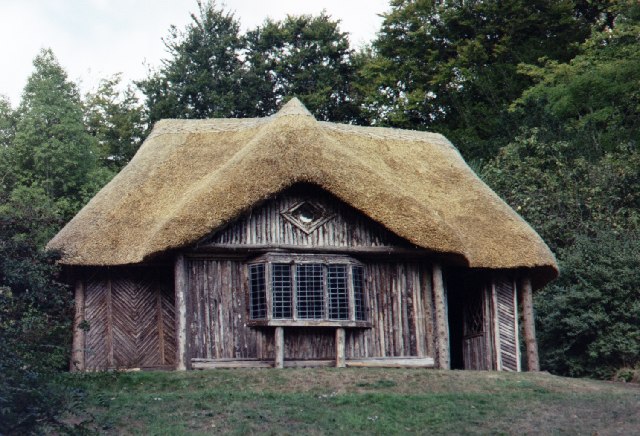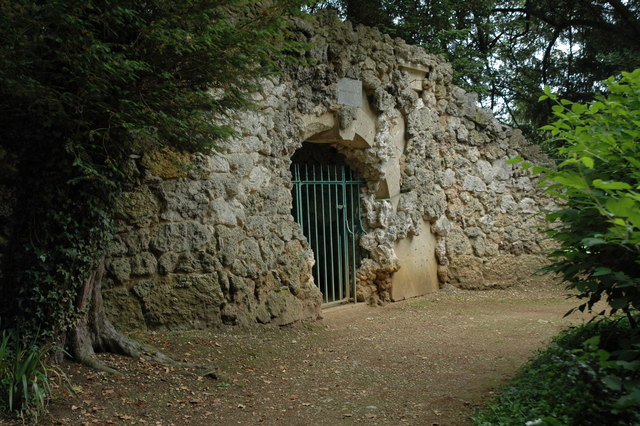 |
| Queen Caroline's Hermitage at Richmond Lodge |
Bit of an odd one for today's garden feature. But that's such a part of the fun of garden history - all the weird and wonderful that happened in our gardens, and the reasons why it happened.
During the 18th century and as a part of the movement towards the new, naturalistic English Landscape style there was considerable revival in antiquarian interests. There was a re-rediscovery of the Classics - literature, architecture and archaeology. However, this interest in things ancient was not restricted to Italy and Greece, and there was a lively curiosity with the early history of Britain and its inhabitants. One area of particular fascination was the mysteries of the druids.
 |
| Originally called the Hermit's Hut, Killerton's Bear Hut was erected in 1808. Attribution: David Smith |
As with many of the Classical rediscoveries which were played out in the new landscapes, in the form of picturesque natural scenery, emotional overtones and garden buildings, so too the interest in druids took physical form. Many new gardens created from the 1720s onwards were embellished with a druid’s cell or cave, a term often also given to a rustic structure or hermitage.
 |
| Dido's Cave at Stowe, a 'classisised' Druid's Cave. Attribution: Philip Halling Smith |
Built from stone or wood - the use of tree stumps and roots was popular, although Classical embellishments were also used, it was important that the druid’s cell or hermitage was inhabited by a hermit or druid. In most instances models made of waxworks, straw stuffed clothes, or clockwork sufficed, but occasionally a ‘live-in’ hermit was employed. For example by the Duke of Beaufort at Badminton in Gloucestershire - click here for image of the hermitage. Here, the hermit’s role was to live alone, to appear bedraggled, and to terrify visitors. However, Beaufort fired his hermit for enjoying female company and for moonlighting on other nearby estates.
 |
| The Stowe Hermitage by William Kent, 1731 |
Stowe also has a hermitage but the building is in classical style. Here too, the resident hermit was sacked - this time for drunkenness.

No comments:
Post a Comment